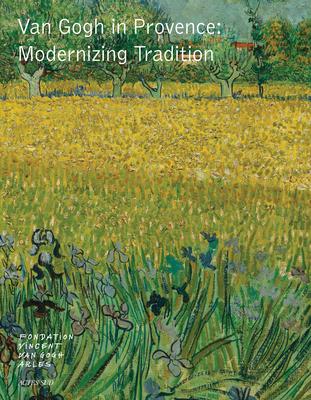The surging brushstrokes and vibrant colors of Vincent van Gogh's Provence period
Although Vincent van Gogh is now considered one of the most original artists of his time, his art was deeply rooted in tradition. Modern subjects and styles began to enter Van Gogh's oeuvre after he arrived in Paris in 1886, and his subsequent years in Provence found him experimenting and refining his personal style. But Van Gogh always remained true to the subject matter that had interested him in his early years. Three genres dominate Van Gogh's work from the beginning of his career to its end: the figure, the landscape and the still life. Van Gogh in Provence argues that Van Gogh's achievements as a modernist are best understood in relation to these traditional loyalties. Using vibrant colors, surging brushstrokes and daring compositions to give established motifs new, expressive form, Van Gogh built a modern house on a traditional foundation. Vincent van Gogh was born in the Netherlands in 1853. His painting career began when he was in his late twenties, influenced first by his work as a missionary in a mining region of Belgium, and later by his exposure to Impressionism while living in Paris. His bright, signature style emerged after relocating to the South of France, where he produced over 2,000 artworks in just over a decade. After bouts of mental illness, the artist took his life in 1890.
Book
Van Gogh in Provence: Modernizing Tradition
(Write a Review)
Hardcover
$35.00
The surging brushstrokes and vibrant colors of Vincent van Gogh's Provence period
Although Vincent van Gogh is now considered one of the most original artists of his time, his art was deeply rooted in tradition. Modern subjects and styles began to enter Van Gogh's oeuvre after he arrived in Paris in 1886, and his subsequent years in Provence found him experimenting and refining his personal style. But Van Gogh always remained true to the subject matter that had interested him in his early years. Three genres dominate Van Gogh's work from the beginning of his career to its end: the figure, the landscape and the still life. Van Gogh in Provence argues that Van Gogh's achievements as a modernist are best understood in relation to these traditional loyalties. Using vibrant colors, surging brushstrokes and daring compositions to give established motifs new, expressive form, Van Gogh built a modern house on a traditional foundation. Vincent van Gogh was born in the Netherlands in 1853. His painting career began when he was in his late twenties, influenced first by his work as a missionary in a mining region of Belgium, and later by his exposure to Impressionism while living in Paris. His bright, signature style emerged after relocating to the South of France, where he produced over 2,000 artworks in just over a decade. After bouts of mental illness, the artist took his life in 1890.Hardcover
$35.00